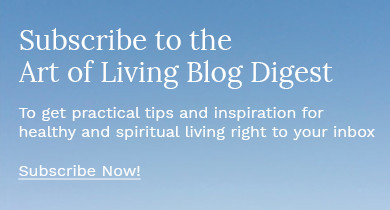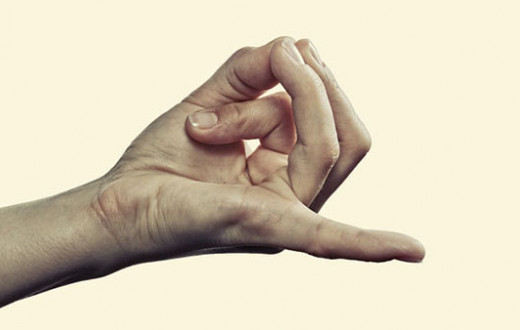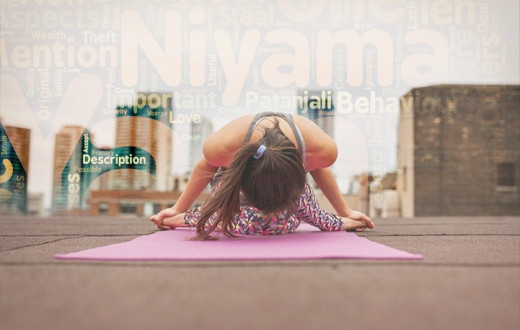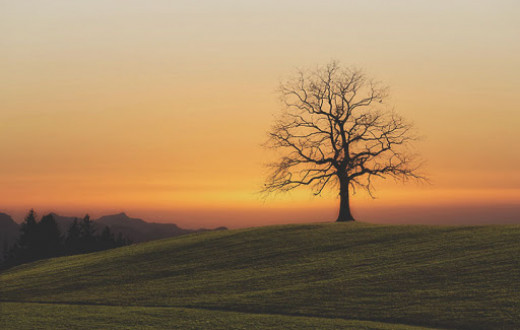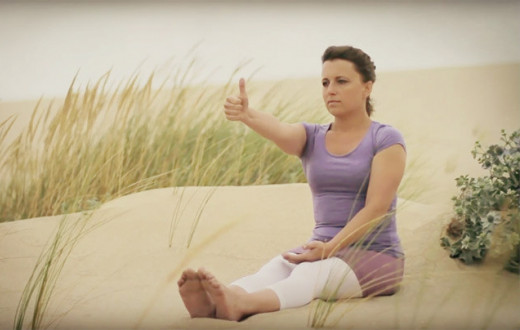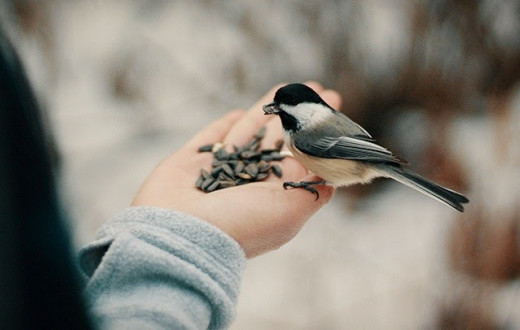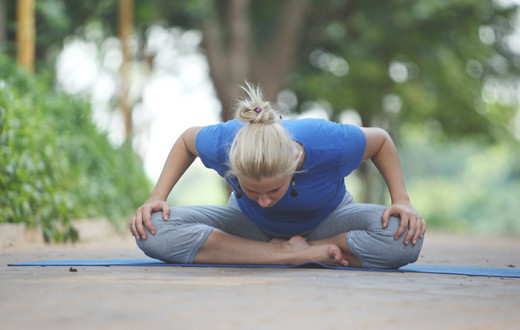Kona =Angle; Asana = Pose/Posture
(This posture is Pronounced as:konah-sanah)
How to do Angle Pose (Konasana)
- Stand straight with feet about hip width distance apart and arms alongside the body.
- Breathe in and raise the left arm up so that the fingers point towards the ceiling.
- Breathe out and bend to the right, first from the spine, and then move your pelvis to the left and bend a little more. Keep your left arm pointing up.
- Turn your head to look up at the left palm. Straighten
the elbows. - Breathing in, straighten your body back up.
- Breathing out, bring the left arm down.
- Repeat with the right arm.
Sideways bending with one arm
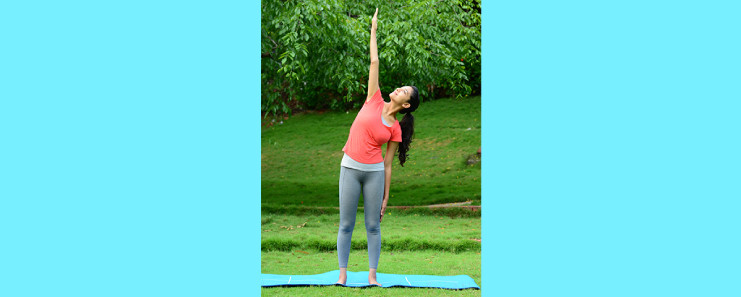
Benefits of Angle Pose (Konasana)
- It helps stretch the sides of the body and the spine.
- Helps in toning of arms,legs,and abdominal organs.
- Helpful in relieving back pain.
- Increases the flexibility of the spine.
- Helps those who are suffering from constipation.
- Helpful for people suffering from sciatica.
Contraindications of the Angle Pose (Konasana)
- People suffering from severe back ache or spondylitis should avoid this pose.
View All - Standing Yoga Postures
<< Sideways Bending Using Both Arms Corpse Pose >>
Yoga practice helps develop the body and mind bringing a lot of health benefits yet is not a substitute for medicine. It is important to learn and practice yoga postures under the supervision of a trained Sri Sri Yoga teacher. In case of any medical condition, practice yoga postures after consulting a doctor and an Sri Sri Yoga teacher. Find an Sri Sri Yoga program at an Art of Living Center near you. Do you need information on programs or share feedback? Write to us at info@srisriyoga.in
FAQ's on Konasana (Angle Pose)
"Follow the sequence: Stand straight with one feet distance apart and arms alongside the body. Breathe in and raise the left arm so that the fingers point towards the sky. Breathe out and bend to the right, first from the spine, and then move your pelvis to the left. Bend a little more. Keep your left arm pointing up. Turn your head to look up at the left palm. Straighten the elbows. Breathing in, straighten your body back up. Breathing out, bring the left arm down. Repeat with the right arm."
"Badha - Bound or Restrained, Kona - Angle, Asana - Pose or Posture The posture is named Badhakonasana as your feet are tucked close to the groin and clasped tightly with the hands forming an angle. It is also popularly known as the Butterfly Pose because of the movement of the legs during the posture, giving the appearance of a butterfly flapping its wings. This posture is also sometimes known as the Cobbler Pose as it resembles the sitting position of a cobbler at work. Benefits of Baddha Konasana: A good stretch for the inner thighs, groins and knees, improving flexibility in the groin and hip region Helps in intestinal and bowel movement Removes fatigue from long hours of standing and walking Offers relief from menstrual discomfort and menopause symptoms Helps in smooth delivery if practiced regularly until late pregnancy"
"Padahastasana or Hand to foot pose is one of the twelve asanas of the Surya namaskar. It has the following benefits: Stimulates glands - thyroid, endocrine, pituitary, pineal and adrenal glands Muscular flexibility in the thigh and lower back to relieve stress Balances vata Removes tamas and dawns creativity Blood circulation in the upper body improves Facilitates metabolism Spleen and Liver function better Lengthens the spine and brings better posture"
"Benefits of Baddha Konasana: A good stretch for the inner thighs, groins and knees, improving flexibility in the groin and hip region Helps in intestinal and bowel movement Removes fatigue from long hours of standing and walking Offers relief from menstrual discomfort and menopause symptoms Helps in smooth delivery if practiced regularly until late pregnancy"
"Badha - Bound or Restrained, Kona - Angle, Asana - Pose or Posture The posture is called Badhakonasana because your feet are tucked close to the groin and clasped tightly with the hands at an angle. It is also popularly known as the Butterfly Pose because of the movement of the legs during the posture, giving the appearance of a butterfly flapping its wings. This posture is also sometimes known as the Cobbler Pose as it resembles the sitting position of a cobbler at work."
"Sit on your heels. Keeping your hips on the heels, bend forward, and lower your forehead to the floor. Keep the arms alongside your body with hands on the floor, palms facing up. (If this is not comfortable, you can place one fist on top of another and rest your forehead on them.) Gently press your chest on the thighs. Hold. Slowly come up to sit on the heels, uncurling vertebra by vertebra, and relax"
People suffering from severe backache or spondylitis should avoid the konasana pose.
"Sukhasana Yoganidrasana Makarasana Pavan Muktasana Dhanurasana Prasarita Padottanasana Anantasana Bidalasana Bakasana Tittibhasana Tulasana Pasasana Lolasana Kapotasana Bhujangasana Viparita Karani Sirsasana Sarvangasana Gomukhasana Svastikasana Padmasana Baddha Konasana Durvasasana Gorakshasana Virasana Hanumanasana Matsyendrasana Utthita Parsvakonasana Utthita Padangusthasana Utthita Vasisthasana Supta Padangusthasana Utkatasana Bhujapidasana Koudinyasana Balasana Ardha Chandrasana Bharadvajasana Bhekasana Trivikramasana Mayurasana Vrischikasana Uttanasana Garudasana Parshvottanasana Ashtavakrasana Simhasana Malasana Matsyasana Kurmasana Kraunchasana Janusirsasana Anjaneyasana Parighasana Dandasana Viparita Dandasana Chaturanga Dandasana Upavista Konasana Natarajasana Jathara Parivartanasana Eka Pada Rajakapotasana Urdhva Mukha Shvanasana Halasana Vajrasana Virabhadrasana Salabhasana Siddhasana Marichyasana Vrikshasana Chakrasana Tadasana Ashtanga Namaskara Surya Namaskar Bhairavasana Navasana Akarna Dhanurasana Kukkutasana Adho Mukha Shvanasana Adho Mukha Vrksasana Setu Bandha Sarvangasana Ustrasana Paschimottanasana Shavasana Trikonasana Garbha Pindasana "
"Math is an integral part of our daily life. Angles have a role in yogasana. A few examples showing the concept of angles used in yogasana are - Utthita Vasisthasana - Four Opposite angles add to 360 degrees Parshva Upavistha Konasana - Your upper body being the center, makes two angles of 90 degrees each. A total of 180 degrees. "
Padahastasana or Hand to foot pose is one of the twelve asanas of the Surya namaskar. Hand to foot pose is one of the forward bend asanas. The beginners can practice this asana with little effort. It improves the body posture as it improves flexibility of the spine and tones the back, legs and abdomen.
"Yoga kriya for eyes:(A video on Yoga for the eyes) Palming Blinking Side-ways viewing Front and sideways viewing Rotational viewing Up and down viewing Preliminary nose tip gazing Near and distant viewing"
"Cross-check if you are doing the following to improve your Padahastasana: Weight of your body evenly distributed on both the legs With the exhalation, squeeze your tummy inwards and bend your body. Get your lower abdomen closer to your thighs. Initially, bend your knees so that your hands reach the toes with ease. Slowly straighten your knees with each exhalation. Squeeze in your hips in this asana"
Bound angle pose stretches your inner thighs, groins and knees, improving flexibility in the groin and hip region.
"Sit with your spine erect and legs stretched out, feet touching each other, and toes pointing upward. Bend your knees and bring your feet towards the pelvis. The soles of your feet should touch each other, making a diamond shape with legs. Grab your feet with your hands. You may place your hands underneath the feet for support. Make an effort to bring the heels as close to the genitals as possible. Breathe in and make an effort to straighten your chest and the spine. Lie down and rest your back on the floor. Your arms can rest on your inner thighs. Relax your muscles and take 5-10 deep breaths in this position To come out, stretch your legs and relax for a few minutes. Roll onto your right side. With the help of your hands, gently sit up."

